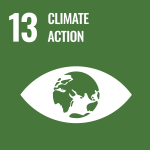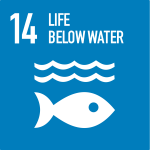Quick Links






© 2024, MyIKLIM, Version 1.0.1
In-house Researcher (Institute of Climate Change, Universiti Kebangsaan Malaysia)
High PM2.5 concentrations in East Coast Peninsular Malaysia were spotted between August and September 2019.
Large-scale biomass burning (BB), such as peatland combustion, emits large amounts of aerosols that lead to transboundary smoke events. Therefore, high pollution in the atmosphere has an adverse impact on human health, society, and environment. Aerosols is referred to fine particulate matter (PM2.5) that is suspended in the atmosphere for at least several hours and degrades the air quality. When the PM2.5 concentrated in the atmosphere, it reduced visibility and introduced the hazy condition. Thus, it has been used as an indicator to identify the haze event.
In 2019, anomalously high ambient PM2.5 concentration based on New Malaysia Ambient Air Quality Standard (NMAAQS) was recorded, with high pollution episodes in August to September at the East Coast Peninsular Malaysia (ECPM). This incident was linked to the biomass burning activities occurred in Indonesia. However, Pahang and Kelantan having almost similar trends of PM2.5 while Terengganu trends is the lowest. This condition probably was influenced by the location of the station which it did not receive much pollutants from the transboundary smoke event at the Terengganu station.
The data is extracted from the the Goddard Earth Observing System Model, version 5 (GEOS-5), and together with Atmospheric Data Assimilation System (ADAS) through the open-access NASA Earth web-based data . The data was downloaded from January 2019 to December 2019 with the spatial resolution 0.5° × 0.65° of latitude and longitude.
The data also was verified with ground-based data model records from three stations in Kelantan, Terengganu and Pahang based on performance indicator of mean fractional bias (MFB), mean fraction error (MFE), and correlation coefficient (R). As result, model data agreed with the ground measurement data, with the MFB values around -0.02 to 0.09, MFE values around 0.15, and R values around 0.38 to 0.72 for all three locations in the ECPM region.
| TEMPORAL COVERAGE | : | Jan-2019 to Dec-2019 |
| TEMPORAL FREQUENCY | : | Daily |
| SPATIAL COVERAGE | : | East Coast Peninsular Malaysia |
| SPATIAL RESOLUTION | : | 0.5° × 0.65° of latitude and longitude |
| VARIABLES | : | PM2.5 (microgram/m3) |
Mohd Napi, N.N.L., Chel Gee Ooi, M., Talib, M.L., Juneng, L., Mohd Nadzir, M.S., Chan, A., Li, L., Abdullah, S. (2022). Contribution of Aerosol Species to the 2019 Smoke Episodes over the East Coast of Peninsular Malaysia. Aerosol Air Qual. Res. 22, 210393. https://doi.org/10.4209/aaqr.210393
No dataset available






© 2024, MyIKLIM, Version 1.0.1